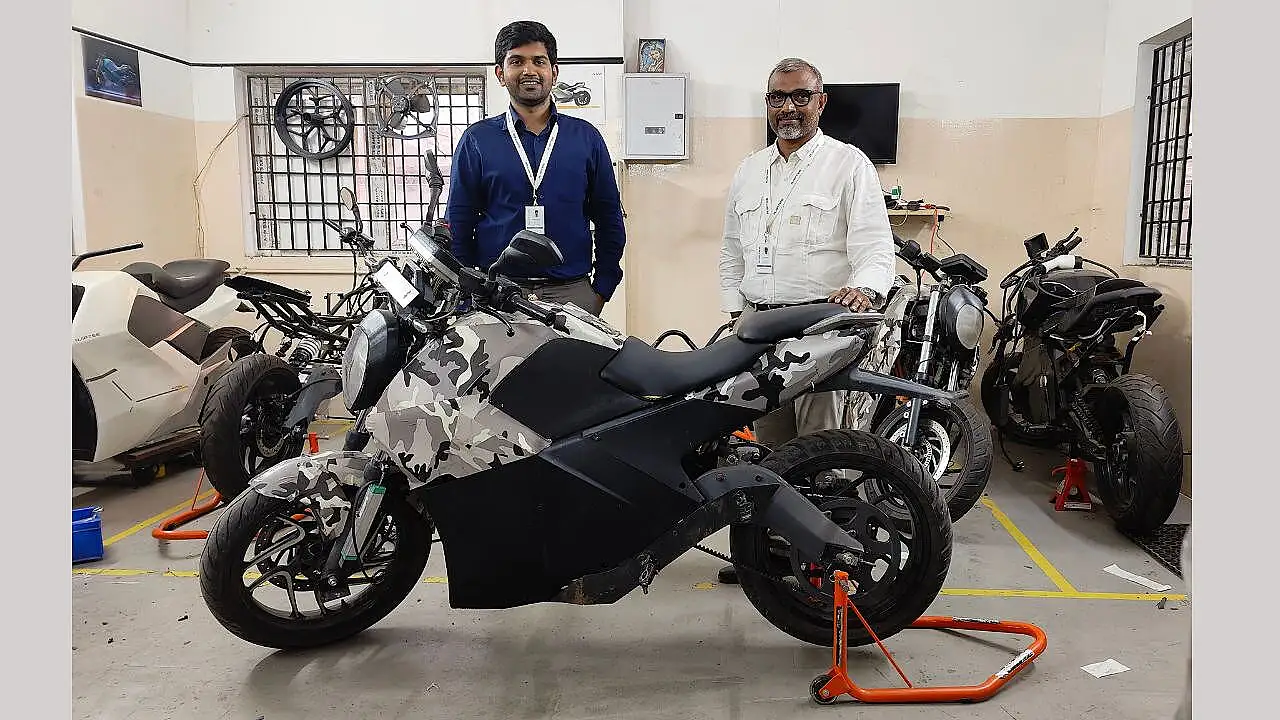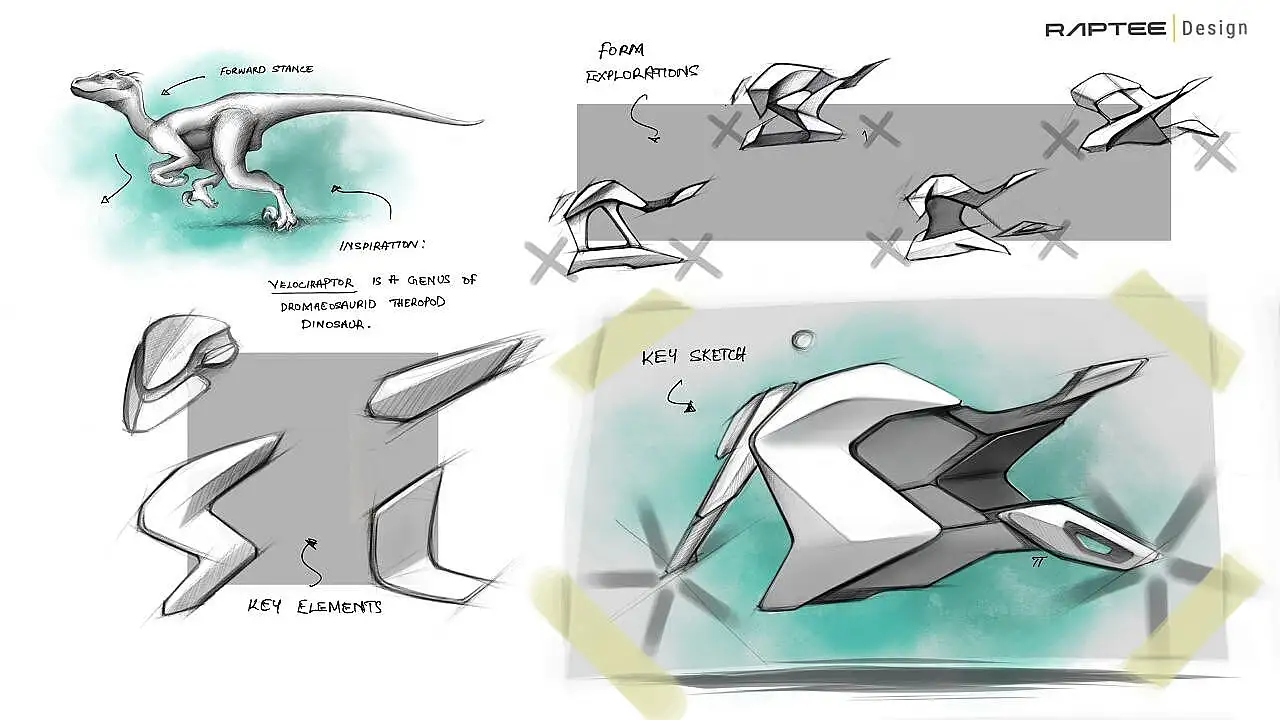
Raptee, an electric motorcycle startup based in Chennai, plans to roll out its debut offering by the end of this calendar. The final tests are being carried out on the production-ready prototype.
The Raptee story began in 2018 when four engineers from Chennai — Dinesh, Keerthivasan, Karthikeyan and Phunith who had earlier worked in Tesla and Wipro — decided to develop an e-motorcycle. Karthikeyan and Keerthivasan were juniors to Dinesh at MIT, Chennai, and had worked on many projects together as well as participated in a host of competitions.
During their chat sessions, they did a lot of introspection on e2Ws, which had a penetration level of just 0.7% with two major players. The young engineers figured out that the tepid response was due to consumers’ perception that an e-scooter was a boring option and burdened by issues relating to speed, range anxiety and safety. This triggered the thought of developing prototypes even before their company was incorporated.
The start-up, with anchor investors such as Kaleesuwari Refinery, Abdul Gafoor (an automotive testing expert) and RPP Infrastructure from Erode, Tamil Nadu, began its journey in 2018. It received INR5 crore in the first round of funding and is now getting ready for the second round.
While Dinesh is responsible for operations, business development and fundraising Keerthivasan handles manufacturing, quality, and inventory. As for Karthikeyan, he takes care of electronics and software with Phunith focusing on testing, validation, and vehicle engineering.
Birth Of The Concept
The concept of Raptee was coined in 2019 with the objective of democratising electric mobility in India. Today, it is a full-stack electric motorcycle startup where the goal is to craft something that is more than just an EV. The quartet decided to develop a machine with an adaptive learning algorithm that was intuitive, intelligent, and safe. It would also have features like throttle mapping, blind-spot detection, and Bluetooth connectivity.

The targeted age group is between 18 and 35 years who are early adopters and make good money. Some are just married while others comprise students and freshers. When the team began sketching designs for the new bike, they sought inspiration from the animal kingdom before zeroing in on Velociraptor, a genus of dromaeosaurid (small) dinosaurs.
This species was characterised by its strong straight bone line running from the head to tail and creating ‘stability in motion,’ which was the core of the new motorcycle. The shoulder muscle of Velociraptor inspired the C-shaped cut-out on the side. Finally, the company's name was born out of modifying the last two syllables of Velociraptor and, hence, Raptee.
High-voltage Motor
The team decided to try out the 240V motor but faced challenges with the supply chain ecosystem and subcomponents unavailable. The engineers then developed a battery management system, vehicle control unit (VCU), motor controller (MC), on-board charger and DCDC converter.
Raptee received INR 3.27 crore from the Automotive Research Association of India (ARAI) for developing the VCU and MC and is now in the list of ten startups to get such a grant. With the inbuilt charger, the bike can be charged with any CCS charger meant for e-four-wheelers (available on most highways).
The battery gets about 80% of its charge in less than 45 minutes, according to Jayapradeep, Chief Business Officer. Raptee has also got support from the Centre in areas like software, applications etc. It developed the e-motor along with a Chennai-based auto component player but does not own the IP as per the agreement established with the supplier. The permanent magnet motor, delivering 21kW peak output, delivers about 150km range with full battery charge and touches a top speed of 135 kmph.
Issues relating to motor heating have been addressed primarily due to 240V, which requires less copper and minimises heat, thereby offering a longer range and speed. This is possible due to the heating effect of electric current: H = (I2R)t where ‘I’ is electric current, ‘R’ is the amount of electric resistance in the conductor and ‘T’ is time. This makes the 240V motor thermally safe even while there is a forced cooling system for the motor.
Battery
The vehicle has a 5.5kWh lithium-ion battery built with 3.7V cells in a ‘series & parallel’ formation connected with an individual fuse. Each cell is in contact with the heatsink to dissipate heat and this reduces the risk of thermal runaway (a chain reaction within a battery cell that is difficult to stop once it has started). As an additional safety measure, the battery unit has a valve that lets out the smoke in the event of any accidental fire while curtailing inflow of water.
According to Dinesh, all this ensures that the battery is not to be removed from the vehicle during the first 15 years of its lifecycle. The battery warranty period is still eight years though keeping in line with industry standards.
Jayapradeep says using data is a major differentiator as the VCU collects it from driving while the fleet data is stored in the cloud. Raptee has filed 43 patents to date. As part of the safety enhancement features, the company has also developed a collision warning and the partners are confident that the e-motorcycle may not need more than one annual service.
Now with the fifth-generation prototype (which this writer rode), the startup is in ramp-up mode with the product “almost ready.” The e-motorcycle is stylish and sturdy with good acceleration, driving comfort and ergonomics. Next in line is another e-bike, equivalent to a 150 cc ICE counterpart, planned 18 months after the present offering hits the roads. From the team’s point of view, any product should follow the MAYA – most advanced yet acceptable — mantra.
Delay In Execution
The bike was scheduled for a launch in July 2022, but obstacles in the form of fundraising, getting suppliers and parts on time along with the semiconductor shortage played spoilsport. Even for prototypes, the team had to wait for about a little over a year for chips and this has been sorted out now by forging direct ties with suppliers.
Dinesh says Raptee will soon move to a four-acre plot on the Chennai–Bengaluru highway to grow its R&D activities and set up a facility with an annual capacity of 104,000 units.
Also Read: